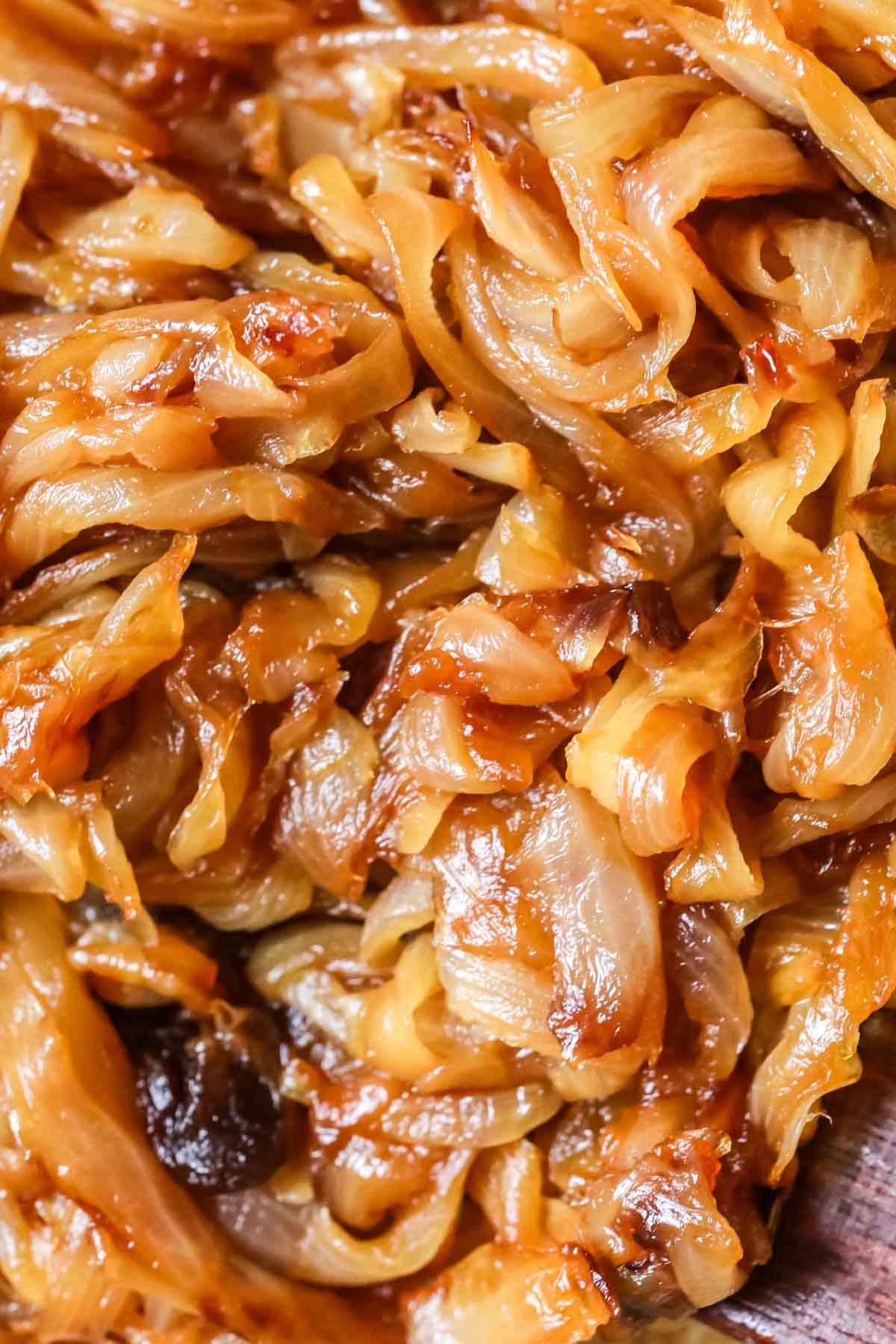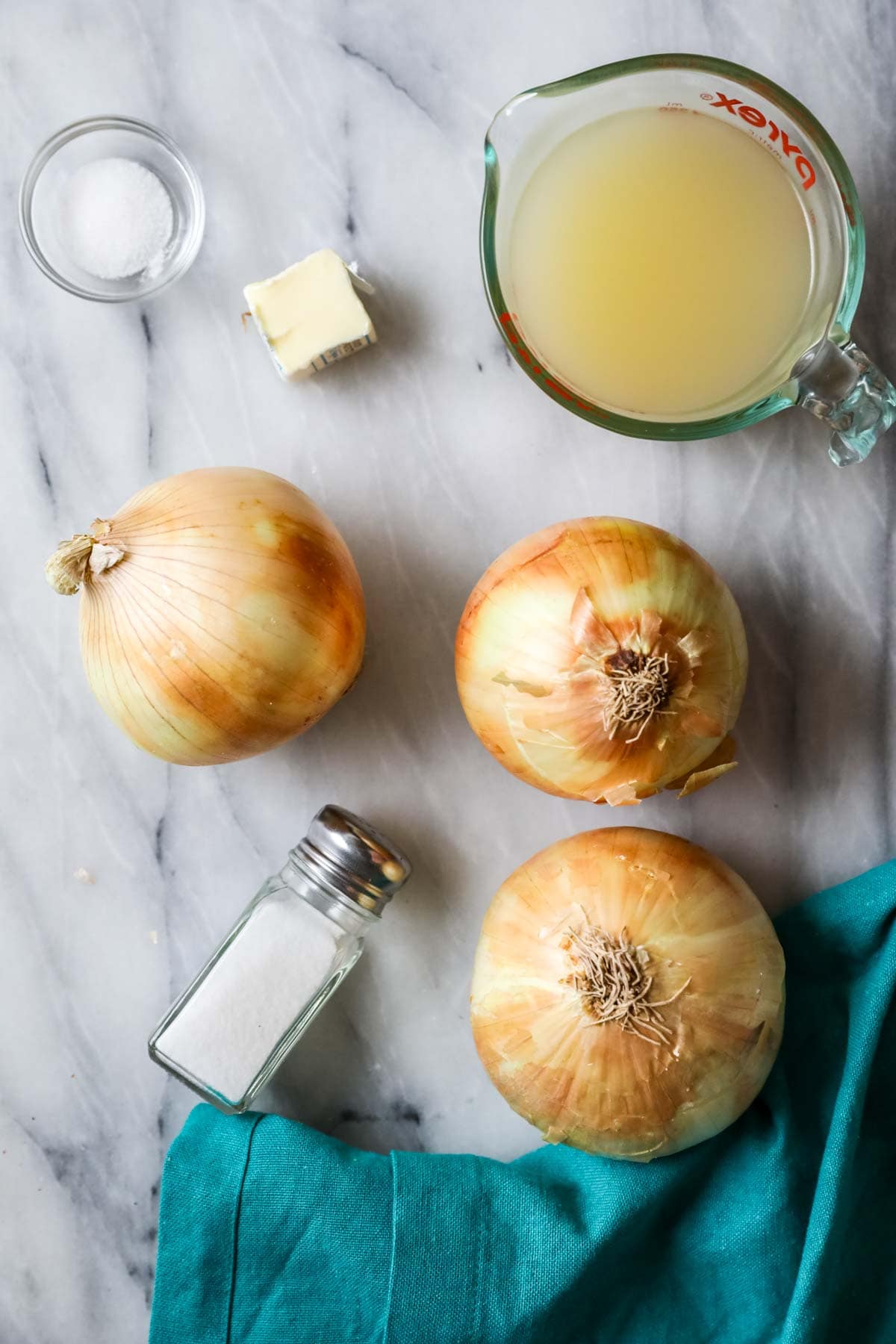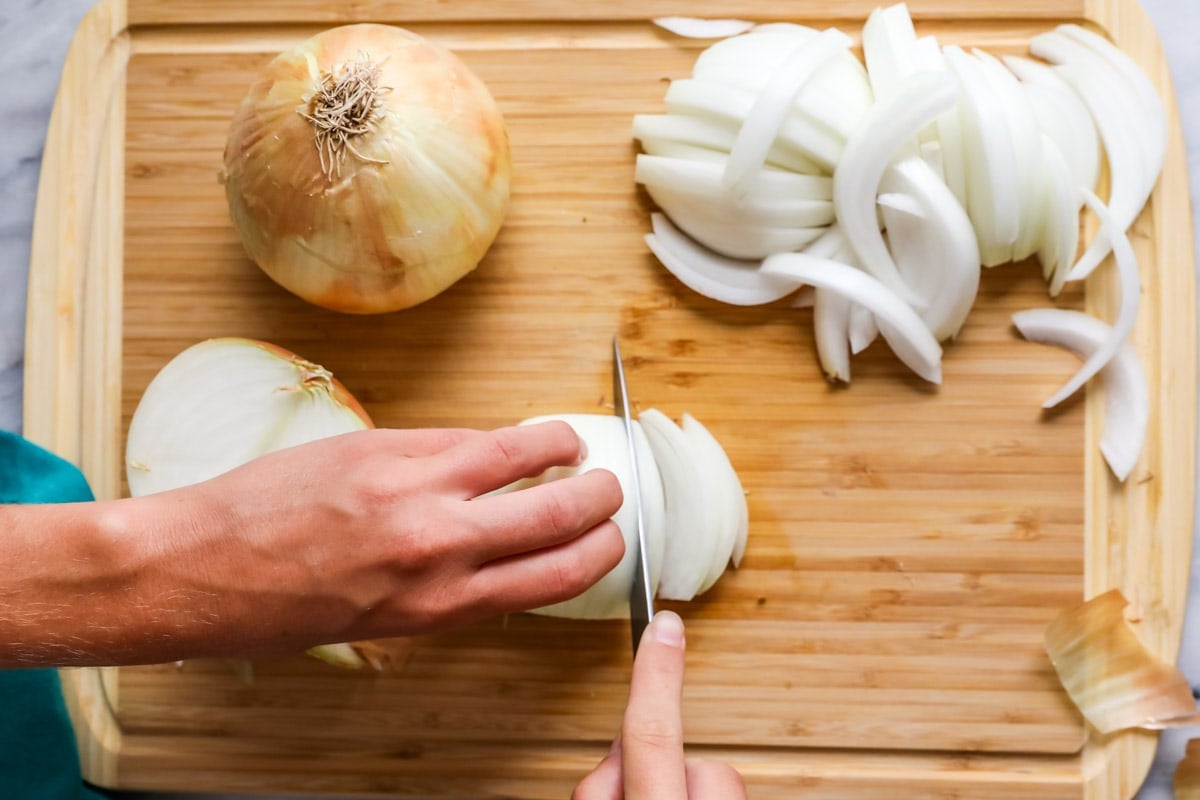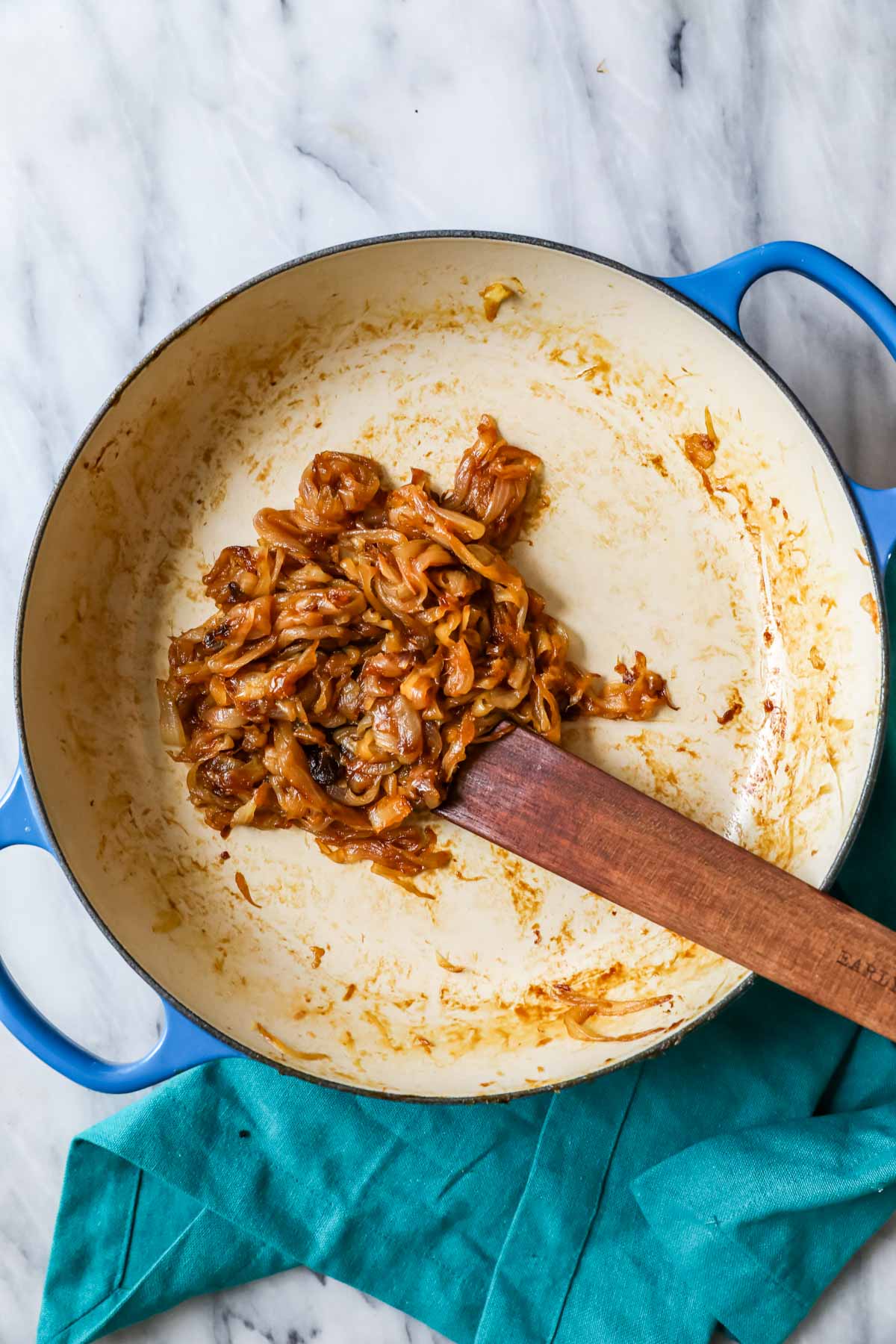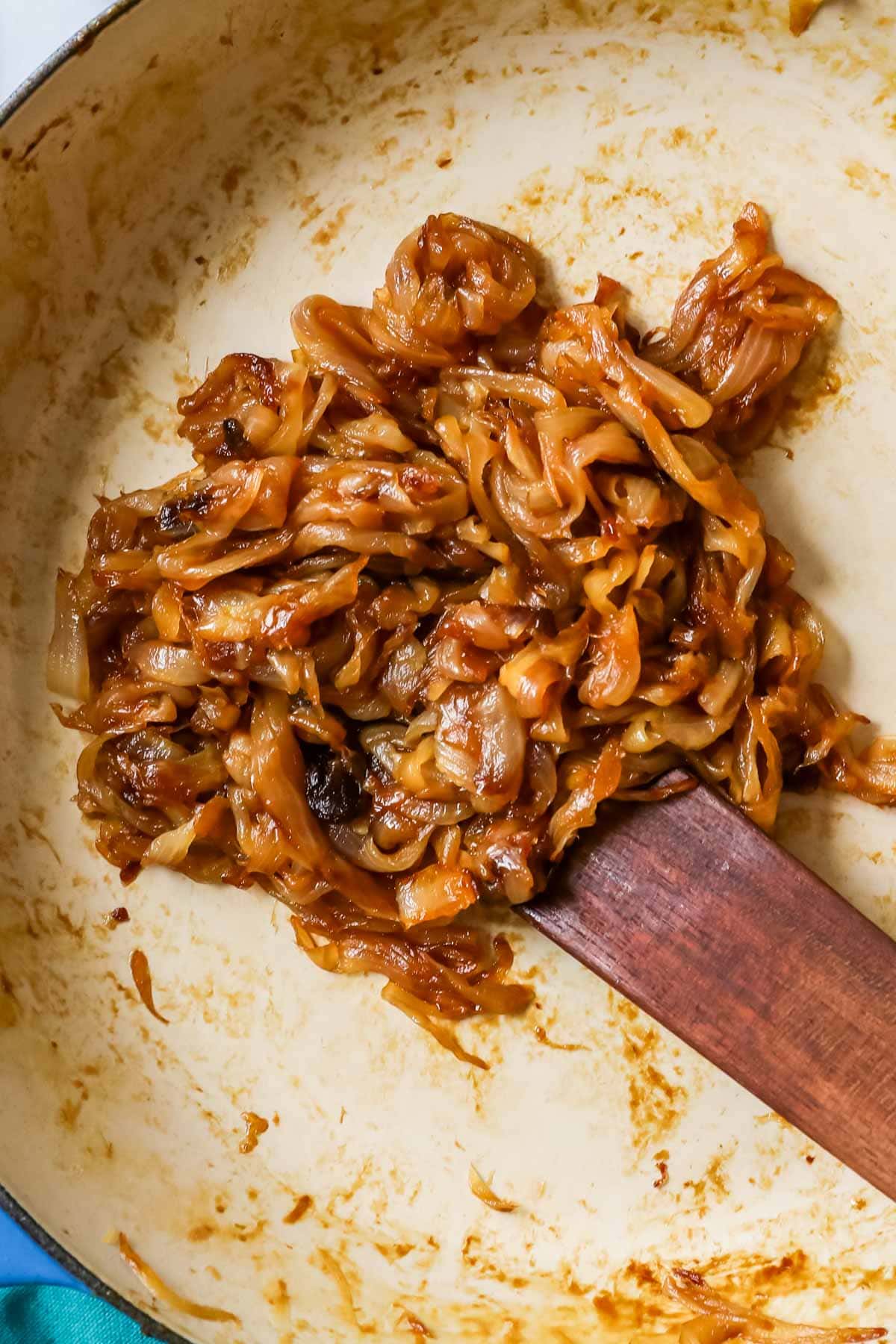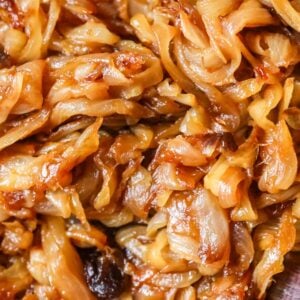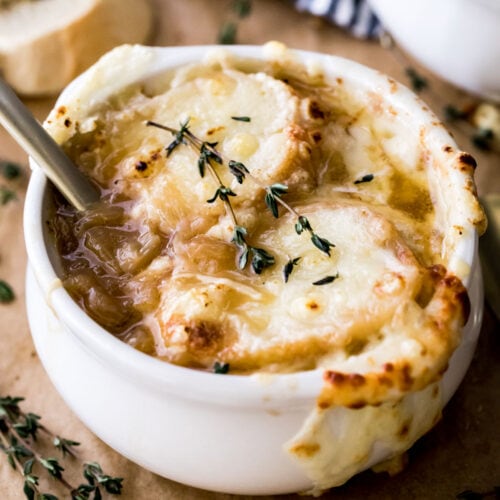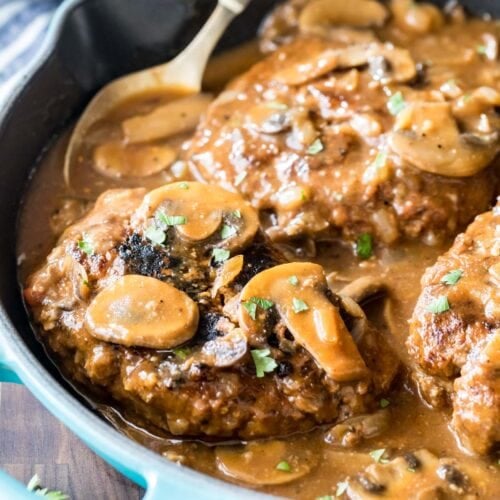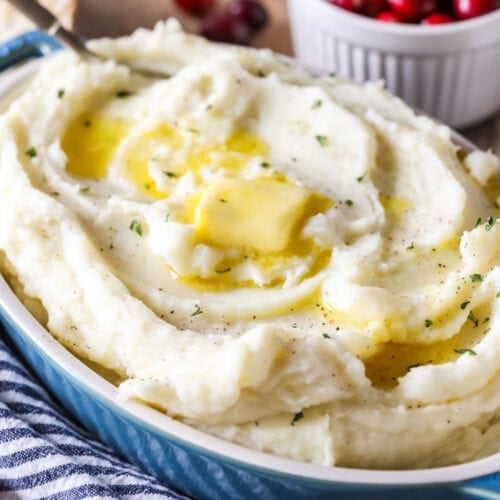The Sweet Magic of Caramelized Onions: A Step-by-Step Guide
Today we’re diving into the alchemy of transforming the humble, sharp-tasting onion into the gilded, caramelized version of itself. While the process of preparing caramelized onions may seem complicated, it’s actually quite simple and requires little more than onions, a good pan, a dab of fat, and, to be honest, the patience of a saint. On that note, I want to be up front with you before we begin. Caramelizing onions is not a complex process, but neither is it a quick one! Don’t plan on whipping them up as a last-minute addition to a hectic weeknight dinner, or anything to be started when you’re feeling crunched for time. This is culinary patience in action, and the reward is well worth the wait (as you surely know if you’ve ever tasted my French onion soup!).
What You Need
The only ingredients strictly necessary to caramelize onions are onions and a bit of fat (butter or oil, your choice!) to cook them in and keep them from sticking from the pan. However, I do include a few other ingredients for best taste and best results.
Onions. Yellow onions or sweet onions are my preference when caramelizing onions. You’ll need to slice them thinly and uniformly so that they cook evenly. Butter or oil. Either works well, but I prefer butter for its flavor. This will coat the onion slices and keep them from sticking to the pan. Salt. While not strictly necessary, this adds flavor to the caramelized onions. Sugar. Purists will not be happy at me for this recommendation, but I stand by it. A pinch of sugar not only adds to the depth of flavor, but it encourages the caramelization process along, too. With how long this process can be, I’ll take all the encouragement I can get 😉 Liquid. Water, chicken broth, vegetable broth, or a dry white wine will work well here, with the latter obviously yielding more flavor to the end result. You’ll cook the onions on a lower heat which will help keep the onions from sticking, but if you notice the onions sticking or burning to the bottom of the pan, add a splash of liquid to deglaze the pan. Patience. As I mentioned, this isn’t a quick process, so make sure you allot yourself at least an hour for proper caramelization.
SAM’S TIP: You can caramelize as many onions as your pan can accomodate, but note that they will shrink in size considerably. I find that 2.5-3 lbs of onions will yield me about a cup of caramelized onions. This is just an overview of the ingredients I used and why. For the full recipe please scroll down to the bottom of the post!
How to Caramelize Onions
What can I do with caramelized onions?
Use them as a base for French onion soup or French onion chicken. Toss them into your favorite pasta dish. Use for burgers or sandwiches (they’re excellent on smash burgers or melted into the cheese of a gourmet grilled cheese). Mix into scrambled eggs, serve over an omelet, or stir into the custard filling of a quiche Lorraine. Use as a pizza topping — I love them chopped and sprinkled over my sourdough pizza. Stir into risotto, the sweetness complements creamy risotto beautifully. Serve over or alongside steak and mashed potatoes.
So, what will you do with your caramelized onions? Enjoy! Let’s bake together! I’ll be walking you through all the steps in my written recipe below! If you try this recipe, be sure to tag me on Instagram, and you can also find me on YouTube and Facebook
Related Recipes
